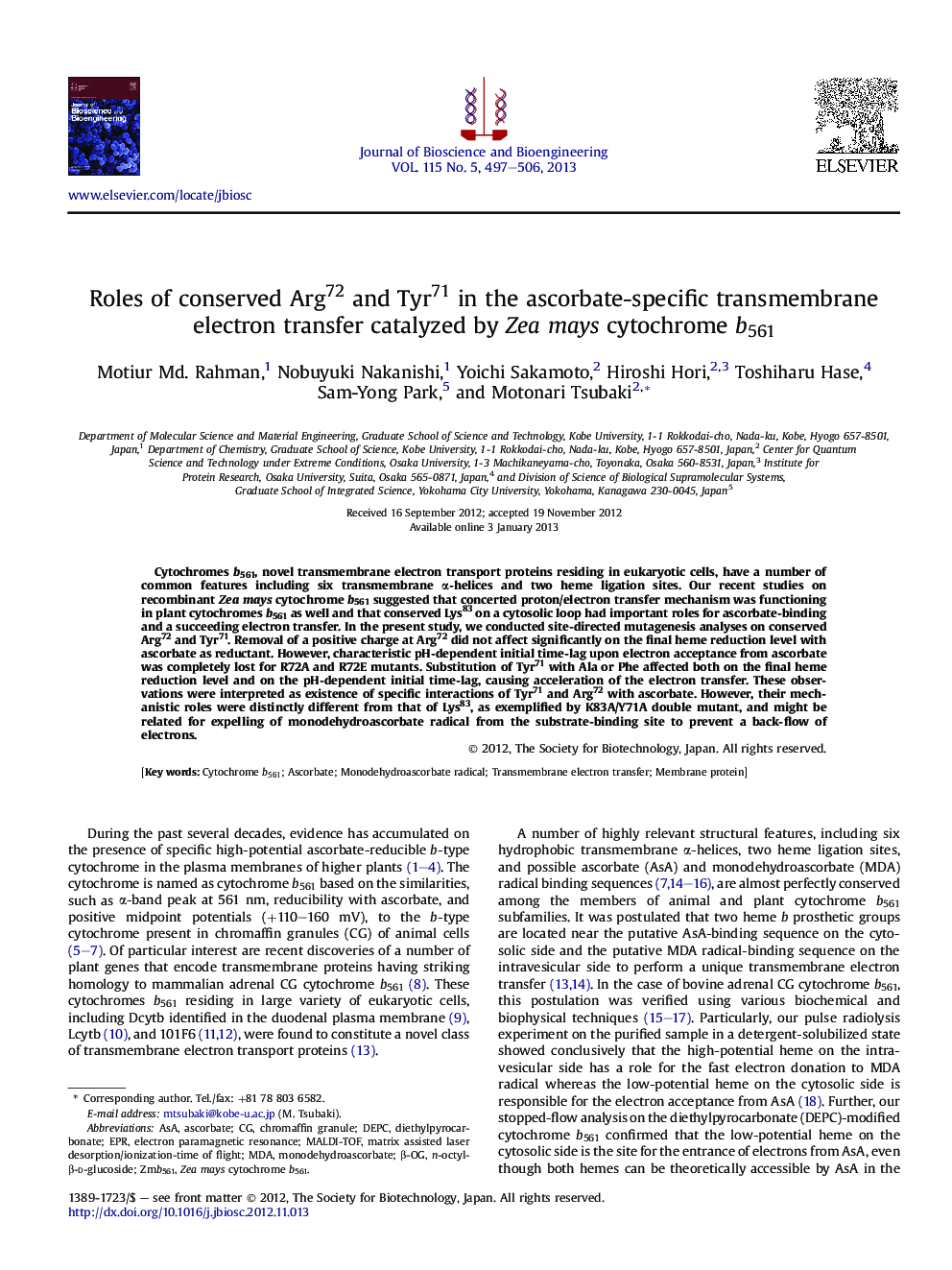| Article ID | Journal | Published Year | Pages | File Type |
|---|---|---|---|---|
| 20867 | Journal of Bioscience and Bioengineering | 2013 | 10 Pages |
Cytochromes b561, novel transmembrane electron transport proteins residing in eukaryotic cells, have a number of common features including six transmembrane α-helices and two heme ligation sites. Our recent studies on recombinant Zea mays cytochrome b561 suggested that concerted proton/electron transfer mechanism was functioning in plant cytochromes b561 as well and that conserved Lys83 on a cytosolic loop had important roles for ascorbate-binding and a succeeding electron transfer. In the present study, we conducted site-directed mutagenesis analyses on conserved Arg72 and Tyr71. Removal of a positive charge at Arg72 did not affect significantly on the final heme reduction level with ascorbate as reductant. However, characteristic pH-dependent initial time-lag upon electron acceptance from ascorbate was completely lost for R72A and R72E mutants. Substitution of Tyr71 with Ala or Phe affected both on the final heme reduction level and on the pH-dependent initial time-lag, causing acceleration of the electron transfer. These observations were interpreted as existence of specific interactions of Tyr71 and Arg72 with ascorbate. However, their mechanistic roles were distinctly different from that of Lys83, as exemplified by K83A/Y71A double mutant, and might be related for expelling of monodehydroascorbate radical from the substrate-binding site to prevent a back-flow of electrons.
